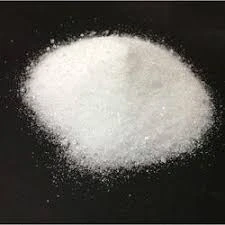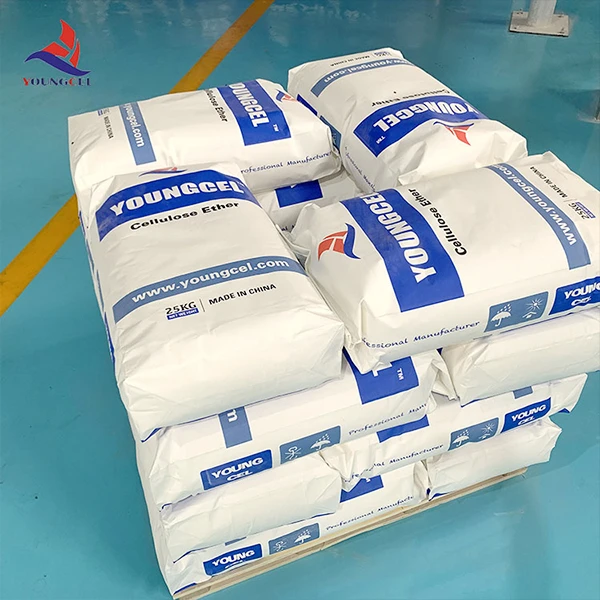- Introduction to Chemical Thickening Agent
- Understanding Rheology: The Science Behind Thickening
- Technical Advantages of Modern Thickening Agents
- Comparative Analysis: Leading Chemical Thickening Agent Manufacturers
- Tailored Solutions: Designing Custom Thickening Systems
- Real-World Case Studies and Application Insights
- Conclusion: The Strategic Importance of Choosing the Right Chemical Thickening Agent

(chemical thickening agent )
Introduction to Chemical Thickening Agent: Market Overview and Drivers
Chemical thickening agents are integral to a multitude of industries, ranging from paints and coatings to cosmetics, pharmaceuticals, construction, and food processing. The global market for chemical thickening agents has witnessed tremendous growth, with 2023 figures indicating an estimated valuation of over USD 8.5 billion and a projected compound annual growth rate (CAGR) of 6.2% through 2030. This increasing demand is driven by their ability to impart desired rheological properties, ensuring product consistency, stability, and user experience. Notable among these are HPMC thickening agents (Hydroxypropyl Methylcellulose), which are extensively adopted owing to their versatility and superior performance in water-based systems. Advancements in formulation science are continually extending the frontiers of what chemical thickening agents can achieve, providing powerful solutions tailored to precise process and product requirements.
Understanding Rheology: The Science Behind Thickening
Rheology, the study of flow and deformation of matter, underpins the mechanism by which thickening agents operate. When chemical thickening agents are introduced into formulations, they modulate viscosity and flow behavior, directly impacting product application and end-user satisfaction. Factors such as molecular weight, polymer branching, degree of substitution, and solubility play pivotal roles in determining thickening efficiency. For instance, HPMC thickening agents have unique water-retention and film-forming properties, resulting in desirable pseudoplastic behavior which benefits products like latex paints, adhesives, and personal care items. Utilizing advanced rheological additives can decrease formulation costs by up to 12% through improved yield values and application properties.
Technical Advantages of Modern Thickening Agents
Contemporary chemical thickening agents provide state-of-the-art benefits compared to traditional alternatives. Enhanced dispersibility, high efficiency at low dosages, resistance to microbial degradation, and broad formulation compatibility are paramount. Specifically, HPMC based thickening agents offer:
- Excellent salt and alkali resistance – making them well-suited for harsh chemical environments.
- Outstanding clarity and stability in transparent formulations such as gels and serums.
- Environmentally favorable profiles, with biodegradable and non-toxic options rising in prominence due to regulatory and consumer demands.
Comparative Analysis: Leading Chemical Thickening Agent Manufacturers
The competitive landscape for chemical thickening agent
suppliers is characterized by innovation, scale, and technical competence. Below is a comparison of four globally recognized manufacturers, focusing on product range, R&D investment, and technical support:
| Manufacturer | Main Product Types | Annual R&D Spending (USD Million) | Technical Support | Sustainability Initiatives |
|---|---|---|---|---|
| Dow Chemical | HPMC, CMC, HEUR | 310 | 24/7 Application Labs, Onsite Support | Bio-based polymers, 100% renewable energy target |
| Ashland | HPMC, HPC, Xanthans | 260 | Formulation Guidance, Training Programs | Green chemistry portfolios, REACH compliance |
| Synthomer | HPMC, Acrylic Thickeners | 120 | Process Optimization, Troubleshooting | Emission reductions, Sustainable sourcing |
| Shin-Etsu Chemical | HPMC, MHEC, Cellulose Derivatives | 210 | Custom analysis, Localized support | Water-saving plants, Eco-friendly logistics |
It’s evident that leading manufacturers not only differentiate through advanced product portfolios, particularly in the HPMC thickening agent domain, but also set benchmarks in technical collaboration and sustainability.
Tailored Solutions: Designing Custom Thickening Systems
As market requirements diversify, off-the-shelf chemical thickening agents are often insufficient to address specialized technical challenges. Customization is now a defining trend, with manufacturers and end-users collaborating to co-develop solutions tuned for specific application profiles. Through polymer blending, molecular tailoring, and incorporation of functional additives, companies can engineer unique viscosity signatures, improved dispersibility, and targeted performance traits. For instance, in high-temperature tile adhesives, a blend of HPMC thickening agent and calcium ion chelators enhanced open time by over 40%, while maintaining excellent anti-sagging properties. Digital formulation tools, lab-based simulation, and iterative pilot testing are key stages in the bespoke thickener development process, resulting in a competitive edge for both brand owners and service providers.
Real-World Case Studies and Application Insights
The proven effectiveness of chemical thickening agents emerges most clearly in commercial-scale applications. Consider the following case studies:
- Water-Based Coatings: By replacing traditional clay with a high-performance HPMC thickening agent, a leading paint manufacturer reduced formulation costs by 11% while increasing viscosity stability in variable humidity conditions by 25%.
- Cosmetic Gels: A multinational skincare brand implemented a custom-blended HPMC system, achieving improved spreadability, reduced syneresis, and consumer satisfaction scores rising by 18% in post-launch testing.
- Pharmaceutical Suspensions: Switching to a low-endotoxin, pharmaceutical-grade HPMC thickening agent enabled a top generic drug producer to achieve batch consistency rates exceeding 97.5%, compared to 92% previously observed with plant gum alternatives.
Conclusion: The Strategic Importance of Choosing the Right Chemical Thickening Agent
In conclusion, the evolving landscape of the chemical thickening agent industry demands that organizations invest in science-backed formulations, multi-level supplier partnerships, and continuous innovation. The advantages of next-generation thickeners, especially in the HPMC segment, go beyond simple viscosity enhancement—they are foundational to product safety, environmental stewardship, and sustainable value creation. As data-driven product design, regulatory requirements, and market expectations rise, proactive selection and customization of the ideal thickening solution is not just a technical imperative but a strategic business priority.

(chemical thickening agent )
FAQS on chemical thickening agent
Q: What is a chemical thickening agent?
A: A chemical thickening agent is a substance used to increase the viscosity of a liquid without substantially altering its other properties. It is commonly used in paints, coatings, cosmetics, and food products. Examples include hydroxypropyl methylcellulose (HPMC) and polyacrylamide.
Q: How does a chemical thickening agent work?
A: Chemical thickening agents work by absorbing water and swelling or by interacting with the product's molecules, increasing its viscosity. This helps improve texture and application. Their action depends on the specific chemical structure of the thickener.
Q: What are the advantages of using an HPMC thickening agent?
A: HPMC thickening agents offer excellent stability, compatibility, and film-forming properties. They are particularly useful in construction materials and personal care products. HPMC is also non-toxic and environmentally friendly.
Q: Where can chemical thickening agents be applied?
A: Chemical thickening agents are widely used in industries like paints, adhesives, pharmaceuticals, food, and cosmetics. They help control flow, improve texture, and stabilize formulations. Their versatility makes them valuable in many applications.
Q: Is HPMC a type of chemical thickening agent?
A: Yes, HPMC (hydroxypropyl methylcellulose) is a widely used chemical thickening agent. It is derived from cellulose and valued for its thickening, stabilizing, and water-retention properties. HPMC is commonly found in construction, food, and personal care products.
-
The Application and Significance of Construction RdpNewsMay.19,2025
-
Industrial Grade HpmcNewsMay.19,2025
-
Building Coating Adhesive Building Coating Adhesive HpmcNewsMay.19,2025
-
Application Of Hpmc For Detergent For Detergent In DetergentsNewsMay.19,2025
-
Application Of Hpmc Cellulose In Cement-Based MaterialsNewsMay.19,2025
-
Application Of High Quality Hpmc For Construction In The Field Of ConstructionNewsMay.19,2025




